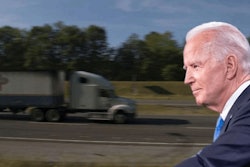California took another leap toward a zero-emission future when it announced in June every new medium- and heavy-duty truck sold in the state will be required to be zero-emission by 2045.
Three weeks later it was joined by 15 other states and the District of Columbia on a Memorandum of Understanding (MOU) to collaboratively work together to achieve 100 percent zero-emission vehicle (ZEV) sales on trucks by 2050, with an intermediate target of 30 percent ZEV sales by 2030.
Known internationally as a leader in air and emission regulations, the news California was taking more action to support zero-emission technology wasn’t a surprise to anyone in the new truck business. But the state’s aggressive timeline set targets that hadn’t previously existed on the industry’s horizon, while its swift backing from 30 percent of the republic showed California’s Air Resources Board (CARB) isn’t a solo instigator against trucking’s status quo anymore.
When it comes to air quality and emission regulations, where California leads, America often follows.
CARB was established in 1967 under then-Gov. Ronald Reagan as the state’s “clean air agency.” Situated within the state’s Environmental Protection Agency (EPA), CARB is the only state agency with federal EPA clearance to set its own emission standards — a power CARB has used to curtail air pollution in its state and push progressive air quality policy across the country.
In 2007, California was the first state to restrict idle times for heavy trucks; in 2009, it was given authority by the EPA to develop its own limits on greenhouse gas emissions after an initial 2008 denial. The state also factored heavily in the development of the EPA Phase I and Phase II emission and fuel economy standards that have defined trucking over the last two decades.
“CARB carries weight in federal policymaking simply because of the vast size of California’s economy and transport sector,” says Robert Bryce, a Texas-based author and journalist who has covered the energy sector for three decades. “That influence will be around for a long time.”










